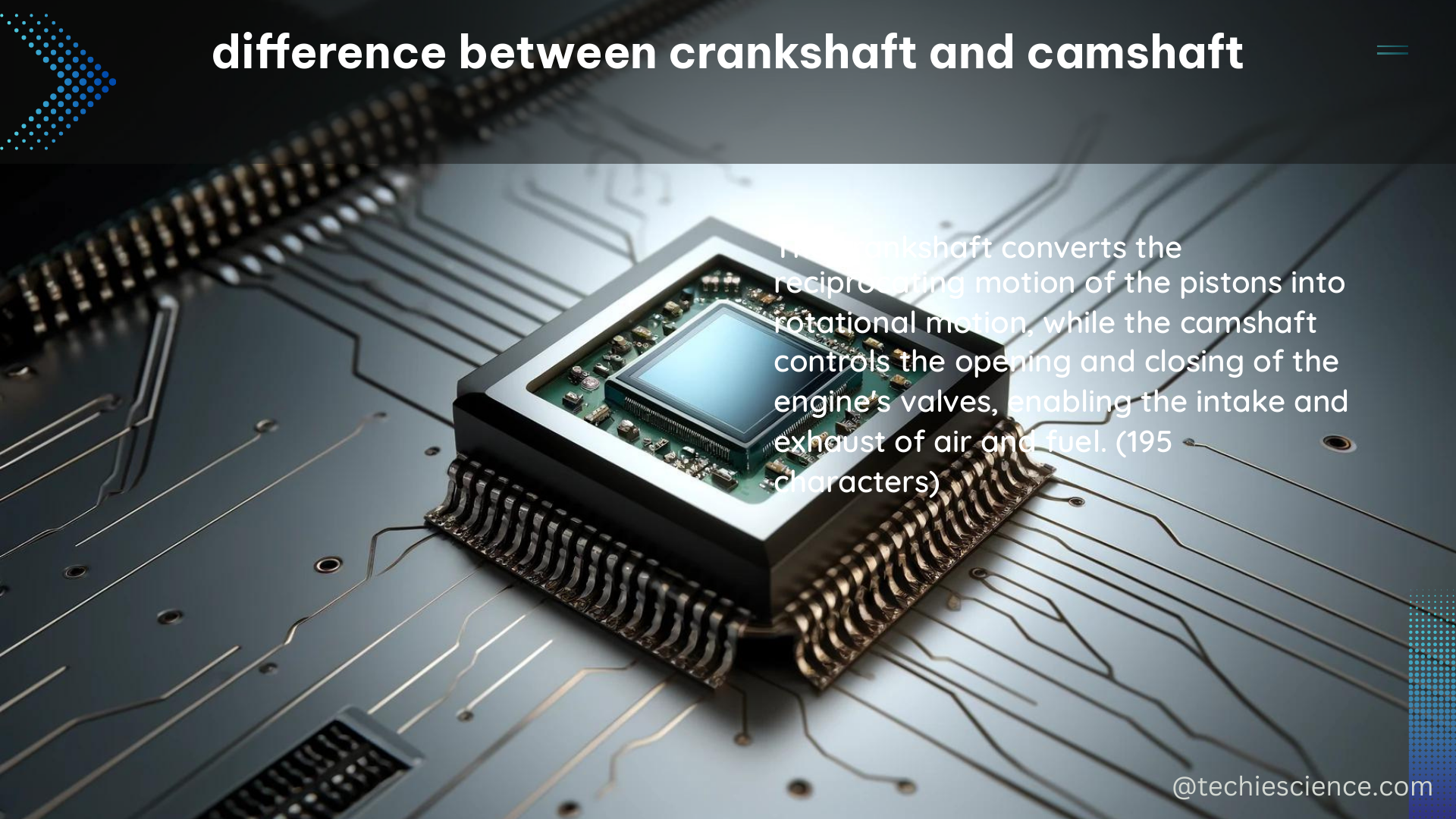The crankshaft and camshaft are two essential components of an internal combustion engine, each playing a vital role in the engine’s operation. While they may seem similar at first glance, these two components have distinct characteristics and serve different purposes. In this comprehensive guide, we’ll delve into the intricate details that set the crankshaft and camshaft apart, providing you with a deep understanding of their respective functions and technical specifications.
Crankshaft: The Heart of the Engine’s Powertrain
The crankshaft is the central component that converts the reciprocating motion of the pistons into the rotational motion required to power the vehicle. Typically made of cast iron or forged steel, the crankshaft is designed to withstand the immense forces and stresses generated within the engine.
Technical Specifications of the Crankshaft
- Length: The length of a crankshaft can vary significantly depending on the engine configuration. For a V8 engine, the crankshaft length typically ranges from 600 to 800 millimeters.
- Diameter: The diameter of the crankshaft is another critical factor, with a typical range of 50 to 70 millimeters for a V8 engine.
- Number of Journals: The crankshaft features a series of circular bearing surfaces called journals, where the connecting rods attach. The number of journals can range from 4 to 12, depending on the engine’s configuration and size.
- Stroke: The stroke, which is the distance the piston travels from top to bottom, is a crucial specification that directly impacts the engine’s power output and performance. For a V8 engine, the stroke typically falls within the range of 80 to 100 millimeters.
Crankshaft Dynamics and Timing
The crankshaft’s position and timing relative to the camshaft are critical for ensuring optimal engine performance and efficiency. To measure these parameters, you’ll need specialized tools like a timing light or dial indicator.
Camshaft: The Orchestrator of Valve Timing

The camshaft is responsible for controlling the opening and closing of the engine’s valves, which are essential for the intake of air and fuel, as well as the exhaust of combustion gases. Unlike the crankshaft, the camshaft is typically driven by the crankshaft via a timing belt or chain.
Technical Specifications of the Camshaft
- Length: The length of a camshaft for a V8 engine typically ranges from 400 to 600 millimeters.
- Diameter: The diameter of the camshaft is generally smaller than the crankshaft, with a typical range of 30 to 50 millimeters for a V8 engine.
- Number of Lobes: The camshaft features a series of raised portions called lobes, which push on the valves to open and close them. The number of lobes can range from 16 to 32, depending on the engine’s configuration and size.
- Lift: The lift, which is the distance the valve travels when opened, is another critical specification of the camshaft. For a V8 engine, the lift typically falls within the range of 5 to 10 millimeters.
Camshaft Timing and Synchronization
The precise timing and synchronization of the camshaft with the crankshaft are essential for the engine’s proper operation. Misalignment or incorrect timing can lead to significant performance issues and even engine damage.
Measuring Crankshaft and Camshaft Specifications
To accurately measure the technical specifications of a crankshaft or camshaft, you’ll need a set of specialized tools, including:
- Micrometer: For measuring the length and diameter of the components.
- Dial indicator: For measuring the lift and position of the components.
- Machinist’s rule: For measuring the number of journals or lobes.
By using these tools, you can ensure that the crankshaft and camshaft in your engine are within the appropriate specifications for optimal performance and efficiency.
Conclusion
The crankshaft and camshaft are two of the most critical components in an internal combustion engine, each playing a vital role in the engine’s operation. Understanding the technical specifications and differences between these components is essential for maintaining, repairing, and optimizing engine performance.
Whether you’re a DIY enthusiast, a mechanic, or an engineer, this comprehensive guide has provided you with the necessary knowledge to delve deeper into the world of crankshafts and camshafts. By applying this understanding, you can ensure that your engine is running at its best, delivering the power and efficiency you demand.
References
- Materials and Process Selection for Engineering Design, Third Edition, 1988-03-01
- Crankshaft and Camshaft Sensor Diagnostics
- Checking and Changing the ABS Sensor

The lambdageeks.com Core SME Team is a group of experienced subject matter experts from diverse scientific and technical fields including Physics, Chemistry, Technology,Electronics & Electrical Engineering, Automotive, Mechanical Engineering. Our team collaborates to create high-quality, well-researched articles on a wide range of science and technology topics for the lambdageeks.com website.
All Our Senior SME are having more than 7 Years of experience in the respective fields . They are either Working Industry Professionals or assocaited With different Universities. Refer Our Authors Page to get to know About our Core SMEs.